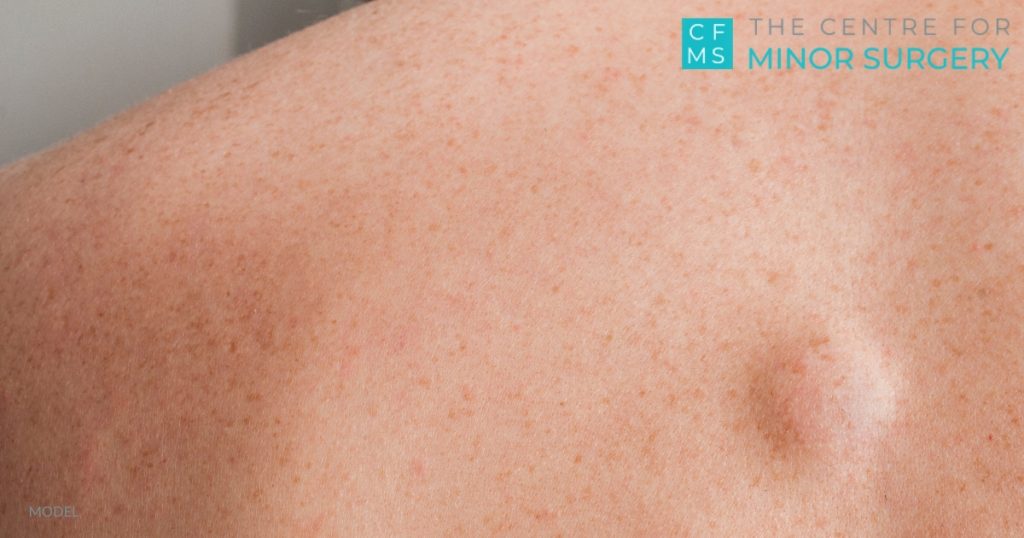At The Centre for Minor Surgery, we understand that health and body image concerns, no matter how small, can be a source of anxiety and confusion. That’s why we’re here to shed light on one of the conditions we often treat: lipomas. We’ve compiled a list of the most common questions about lipomas, from causes to treatments and everything in between.
1. What Is Lipoma?
A lipoma is a benign (non-cancerous) growth of fatty tissue that usually develops just under the skin. These growths are soft, typically painless, and most often appear on the trunk, shoulders, neck, or armpits. While they can occur at any age, they’re most common in adults aged 40 to 60.
2. What Are Common Lipoma Causes?
The exact causes of lipoma are not fully understood, but they are thought to be related to genetic factors. Injuries to the body or abnormal tissue growth may also play a role in their development.
3. What Does a Lipoma Look Like?
A lipoma typically appears as a soft, rubbery lump that moves easily under the skin when pressed. These growths can vary in size, ranging from as small as a pea to many centimetres in diameter.
4. Can Lipomas Be Painful?
Generally, lipomas are not painful. However, they can become tender or painful if they grow under a nerve or contain many blood vessels.
5. Can a Lipoma Be Cancerous?
It’s very rare for a lipoma to turn cancerous. The vast majority of lipomas are benign and do not become malignant.
6. Do Lipomas Ever Go Away Without Treatment?
The simple answer is no; lipomas typically don’t disappear on their own. Lipomas are often non-symptomatic and may not cause any discomfort unless they press against nerves or restrict movement. It is this potential for discomfort, along with aesthetic considerations, that leads individuals to seek treatment.
7. Is Lipoma Treatment Possible Without Surgery?
Nonsurgical options, such as steroid injections to encourage the breakdown of fatty tissue, can decrease the size of a lipoma but don’t always provide a permanent solution. This treatment is unreliable and may also cause atrophy of the surrounding, normal fatty tissue leaving a permanent deformity in the area. At CFMS, we do not offer steroid injections for lipomas. Surgical removal is the most definitive method for getting rid of a lipoma, ensuring it won’t return.
8. What Does a Lipoma Removal Scar Typically Look Like?
At The Center for Minor Surgery, minimizing the visibility of scars is a top priority. The scar from lipoma removal is typically small and becomes less noticeable over time. Scar size usually depends on the size of the lipoma and generally is about 1/2 to 2/3 the size of the lipoma itself.
9. What Happens if a Lipoma Is Left Untreated?
If left untreated, most lipomas will remain the same size or grow slowly. However, they can become uncomfortable or unsightly, prompting many patients to seek removal for cosmetic reasons or to relieve discomfort.
Learn more about lipoma diagnosis and treatment in this related blog post.
Schedule a Consultation
Understanding what lipomas are and how they’re treated can alleviate concerns and help you make informed decisions about your health. If you have a lipoma that you’re considering having removed or have any concerns about a lump on your body, we’re here to help. Please call our office today at (416) 663-9649 or request a consultation using our online form.


Leave a Reply